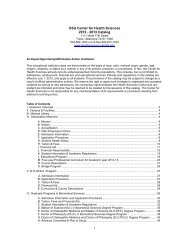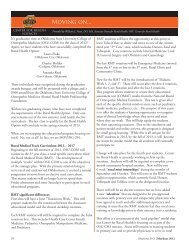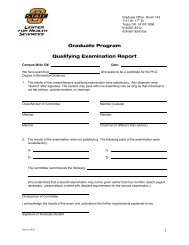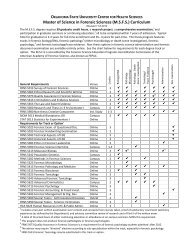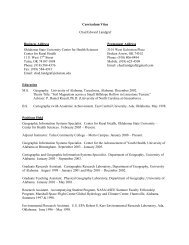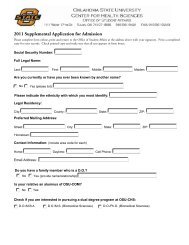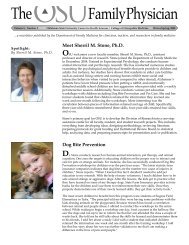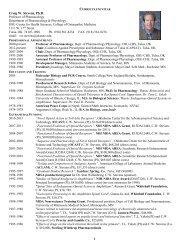Outpatient Osteopathic Cranial SOAP Note Form Usage Guide
Outpatient Osteopathic Cranial SOAP Note Form Usage Guide
Outpatient Osteopathic Cranial SOAP Note Form Usage Guide
Create successful ePaper yourself
Turn your PDF publications into a flip-book with our unique Google optimized e-Paper software.
LATERAL STRAIN (LS): named by the direction that the sphenoid is most prominent, usually associated<br />
with a parallelogram head. <strong>Note</strong> that column with a "2" and leave the other blank. If you wish to include<br />
information about the direction of the rotation at the SBS, or if the sphenoid is more anterior on one side or<br />
another, note that in the provided blank space.<br />
VERICAL STRAIN (VS): named by what is happening at the SBS, (e.g, superior strain will have external<br />
rotation of the frontals with a sense of them going caudad anteriorly, and the opposite with inferior strain.)<br />
TEMPORAL: Describes what is happening in each of the temporals<br />
TmC: Intraosseous compression of either temporal. <strong>Note</strong> if present in either or both in the appropriate<br />
column. May be graded in severity or just note "2'.<br />
INTERNAL ROTATION – of right or left temporal. <strong>Note</strong> in one or both columns.<br />
EXTERNAL ROTATION - of either or both temporal.<br />
POSTERIOR: This is a general description of the area posterior to the coronal suture, including the OA<br />
(occipito-atlas) area, Tn (tentorium), PJ (petro-jugular portion of the occipito-mastoid suture), OM<br />
(occipito-mastoid suture), La (lambdoid suture), PT (parieto-temporal articulation, including the parietal<br />
notch), OcC (intraosseus compression of the occiput, or condylar compression), TMJ (temporo-mandibular<br />
joint), and Man (mandible). We realize the mandible and TMJ look pretty anterior, but the influence of the<br />
temporal and occiput on these structures is the deciding factor. If any area stands out as remarkable, note<br />
that.<br />
ANTERIOR: This is a general description of the area, including the coronal suture and articulations of the<br />
sphenoid with temporal and frontal (SS – spheno-squamous, PS – petro-sphenoid, FS – frontosphenoid),<br />
FrC (intraosseous compression of the frontal at the metopic area), Fac (facial bones, including palatines),<br />
and Co (coronal suture). Again, please note any prominent ridging. <strong>Note</strong> severity for both right and left<br />
areas.<br />
CERVICAL: this includes CTJ (cervico-thoracic junction) and above. <strong>Note</strong> any specific diagnostic<br />
findings, or if more upper or lower findings.<br />
THORACIC: This includes TLJ (thoraco-lumbar junction) and above, including the thoracic outlet/inlet.<br />
If unable to separate into upper, middle, and lower, write overall findings in all three, or include middle<br />
with lower. <strong>Note</strong> that there is a separate category for Ribs for more lateral findings.<br />
LUMBAR: This includes LSJ (lumbo-sacral junction) and above. <strong>Note</strong> any specific diagnostic findings.<br />
SACRUM/PELVIS : This should include any torsions, flexion, or extension of the sacrum, or intraosseous<br />
compression of the sacrum.<br />
PELVIS/INNOMINATE: This includes the pubic bone, ischium, ilia<br />
EXTREMITY – UPPER: This should include shoulders and scapulae as well as arms and hands<br />
EXTREMITY – LOWER: This includes hips and any leg, knee or foot malformation<br />
RIBS: <strong>Note</strong> any dysfunction and if more prominent on right or left, anterior or posterior<br />
DIAPHRAGM/ABD/other: This will include the diaphragm.<br />
3




